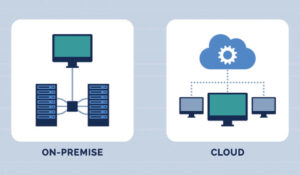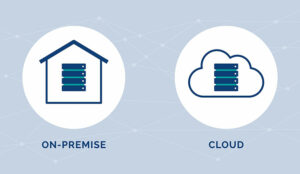Leslie Blanke of Serenova shares five benefits of using a cloud contact centre, which you may not be able to achieve with legacy-based systems.
While businesses scramble to offer positive, convenient and effective customer experiences to a demanding public, they must also manage costs in the contact centre.
The inflexibility of on-premises contact centre solutions can make improving customer experience costly and difficult.
Cloud-based contact centre solutions not only save time and money, they also provide the flexibility and ease of use necessary for improved customer experiences.
Here are five benefits the cloud can offer your contact centre that an on-premises system can’t:
1. Reduce IT Spending
According to research by Vanson Bourne, companies that move applications to the cloud typically reduce IT spending by 15%.
With a cloud-based contact centre, you’ll avoid purchasing, maintaining and upgrading multiple software applications and the hardware to run them. You can also repurpose staff and facilities for other functions.
On-premises systems require the same level of hardware and software despite fluctuating volume due to seasonality. And if the system fails, you need additional equipment to provide redundancy and failover.
These requirements complicate the operation of your infrastructure, and it takes skilled people to manage it.
Cloud solutions handle peak capacity and redundancy for you, saving the cost of purchasing hardware you will rarely use and paying specialists to manage it.
2. Ensure Uptime – Anytime, Anywhere
A cornerstone of delivering top-notch customer experience is that you’re available to your customers when and where they need you. If your customers can’t reach you to get what they need, they’ll go elsewhere.
The thing about servers is they go down. Any contact centre using an on-premises solution has to maintain not just the servers they need but also extras to take over if one fails. That’s an additional headache. You need to trust your contact centre will be up and running when you need it.
Cloud-based contact centre solutions include automatic fail-over in their infrastructure and may guarantee uptime.
Further, they’re designed for disaster recovery. Many providers have distributed systems that mitigate the risk of a natural or man-made emergency in one area from affecting the whole business.
3. Streamline Your Applications
It’s hard to get all the systems in your contact centre working well together. Often, agents are flipping from one application to another in a single call, which means they might not easily get all the customer information they need. Agents don’t see the full customer journey.
As a result, they may inadvertently leave the caller feeling unappreciated and frustrated.
Your customer experience will benefit when a cloud provider has already done the integration work for most of the tools a contact centre needs.
So you can take advantage of interactive voice response (IVR), data analytics, workforce management, performance analysis and quality management all in one platform.
Plus, cloud-based products can provide sophisticated dashboard and reporting capabilities that help supervisors manage all aspects of the contact centre from one place.
With integrated applications, you get a full picture of consumer interactions, system transactions and agent activities.
When cloud contact centres integrate with third-party applications, such as customer relationship management (CRM) systems, agents can access customer information, preferences and past contacts on their desktop without hopping from one data source to another. Representatives can knowledgeably help customers with less effort.
CRM data can also help route people to the best department or employee based on open support tickets, past interactions or lifetime customer value.
Cloud solutions can also more easily integrate communications channels, so customers can reach you via the phone, text, email, chat or social media personal messaging.
The incoming contacts are routed via a single queue to the right agents and departments, considering agent skills, customer activities, contact centre volume and customer preferences.
Adding chat, text and email to the communications options reduces call volumes and hold time.
4. Change and Adapt Quickly
Typically, it takes a lot of time and effort to change on-premises contact centre systems. Just adding prompts to the IVR or opening a new call destination can turn into a major project.
Also, with 40% of customers preferring the phone for complex interactions, out-of-date applications can damage your brand.
Cloud contact centres can address this challenge with intuitive design tools that often require no coding skills. You can quickly update the IVR and even revamp phone automation to serve people faster. Templates for interaction flows reduce the effort required to change how you handle and route contacts.
But it’s not valuable to make changes if you don’t know how well they’re working. Call reporting supplements the testing so you can keep an eye on routing and automation success over time.
Cloud contact centres also position you well for adapting to changing customer preferences. With cloud flexibility, you can easily add in new automation or functionality across channels.
You can also add new channels and integrate them into current systems without major infrastructures changes.
5. Recruit Globally
With your contact centre in the cloud, it’s easy to add remote agents. They just need an internet connection and a web browser to see the same desktop information as on-site employees and help customers via any channel.
Managers can monitor their calls, send support messages, assign training videos and conduct coaching sessions for mobile agents through the same web-based applications.
A Global Workplace Analytics meta-study found that telework has improved retention rates for most companies, which saves the cost of hiring and training new employees.
When you can search globally for the most skilled employees, you hire people with the best experience and knowledge of your industry.
A higher-skilled workforce improves performance overall and saves training costs.
Finally – Focus on What’s Most Important
As a bonus, moving the contact centre to the cloud frees budget and management resources to focus on strategy and growth. What changes do you want to see in your markets? What problems are you working to solve?
How much more could you accomplish with a cloud-based contact centre partner easing the burden of everyday contact centre management? Maybe it’s time to find out.
For more from Serenova, visit: www.lifesize.com
Author: Robyn Coppell
Published On: 28th Oct 2019 - Last modified: 13th Jan 2021
Read more about - Guest Blogs, Lifesize





































